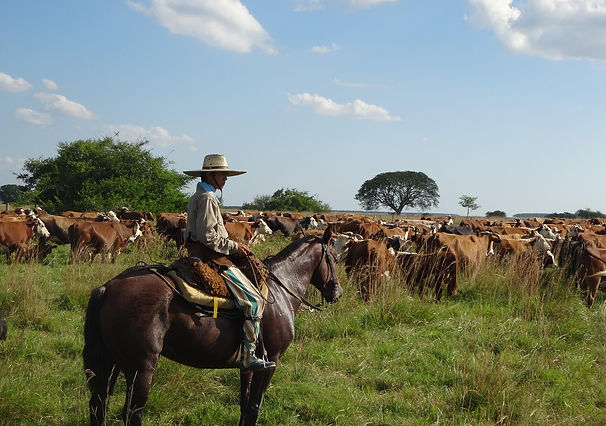
Gauchos
What are Gauchos?
Gauchos are Argentine cow handlers, similar to the well-known cowboys. They are known for the independence, rugged lifestyle, and their skills when it comes to horse riding and ranching. Their culture and customs remain an important part of Argentine culture today.

Culture
Gauchos live a simple and not very wealthy lifestyle. They live in small mud huts, roofed with grass mats, and slept on piles of hides. Their religion consists of a combination of Indigenous traditions and Roman Catholicism. They eat mostly meat, and when they weren't working, Gauchos often drink, sing, dance, and gamble. Gauchos are also usually Mestizos, meaning they were from a mixed Indigenous and European descent. From their culture and traditions, the literature of the Gaucho was passed on for generations to today.


History
Gauchos originated in the Pampas, and thrived from the mid 18th to 19th century. In the 1700s, many European settlers, including the British, Dutch, French, and Portuguese, ran contraband businesses in hides and tallow. These businesses were very profitable for the Argentine people, so the Gauchos emerged, hunting cows in the frontier regions around Buenos Aires in order to make money.

Tools and attire
Gauchos wear a very recognizable costume that is still commonly worn by many Argentine cowhands today. It consisted of a Chiripa that was worn while riding to provide padding and comfort, a large wool poncho, long baggy pants called bombachas, and tough leather boots. When Gauchos rode, they always carried several weapons and tools with them. These often included a knife, a lasso, and boleadoras, also known as bolas. This tool was made out of leather cords, and three stones, and was thrown at an animals legs in order to immobilize it.